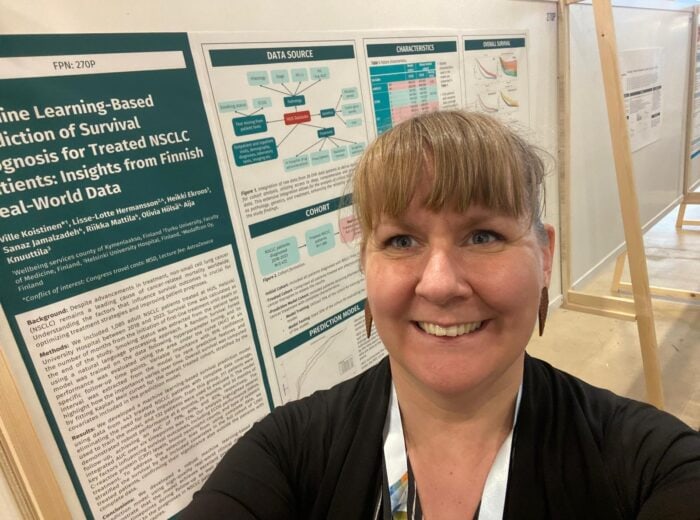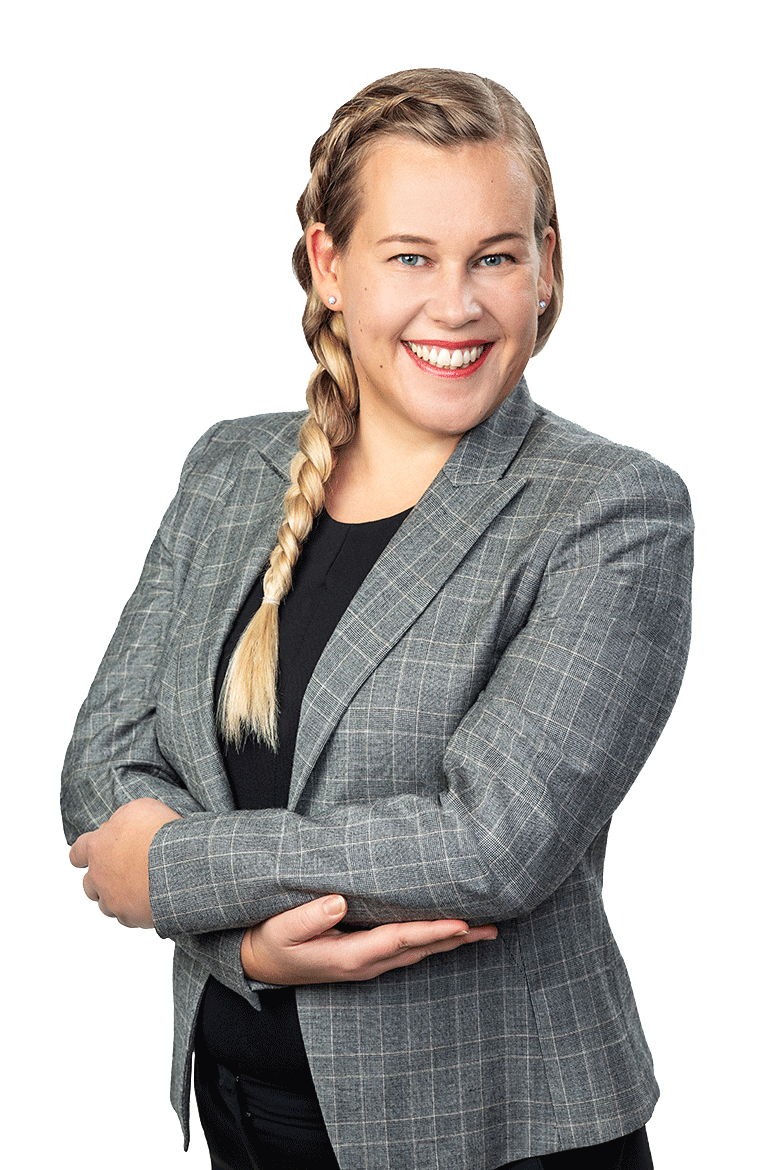Medaffcon Presented Insights from Finnish Real-World Data at European Lung Cancer Congress
Medaffcon's European Lung Cancer Congress (ELCC) poster showcased key findings from a recent study on non-small cell lung cancer (NSCLC).
Experts from Medaffcon, Takeda and the Hospital District of Helsinki and Uusimaa (HUS) have looked into the complex syndrome’s burden over an unusually long follow-up period, making the findings intriguing both nationally and internationally.
Experts from Medaffcon, Takeda and the Hospital District of Helsinki and Uusimaa (HUS) have concluded an extensive study into paediatric short-bowel syndrome based on information from patient records rather than questionnaires.
The study casts much-needed light on healthcare resource utilisation associated with the rare syndrome through the HUS Data Lake, a service offering researchers efficient and secure access to data from the patient registers and some administrative registers of the largest hospital district in Finland.
It incorporated all patients born in the hospital district in 2010–2019 who were diagnosed with the syndrome and followed them from birth until the end of 2020, the median follow-up time settling at almost six years. More than half of the 38 patients were early pre-term births, meaning they were born after a gestation period of less than 30 weeks.
Dr. Laura Merras-Salmio, chief of paediatric gastroenterology at Helsinki University Central Hospital, says the study is significant firstly because it reveals the incidence of paediatric short-bowel syndrome in Finland: 24 cases per 100,000 live births.
“The incidence alone makes this a paper with a lot of utility going forward,” she states. “We have to be able to tell how many of these patients we have in order to accomplish anything concrete at the grass-roots level – not mention the importance of having the puzzle pieces together for follow-up studies in the form of background data.”
Another key result, she continued, is that the study provides data corroborating an assumption shared by many medical experts: that treating infants and children with the complex condition is tremendously costly.
Characterised by insufficient bowel length or function for enteral autonomy, the syndrome is manifested by issues such as fluid loss, nutrient malabsorption, electrolyte abnormalities and increased susceptibility to infections, stunting growth and development.
The research team estimated healthcare resource utilisation costs in the patients’ first year of life at 221,000 euros for full-term births and at 279,000 euros for early pre-term births. The costs arise from the fact that the patients spent an average of 60–75 per cent of their first year in hospital, with the first hospitalisation lasting an average of 150 days. In addition to hospitalisations, the patients had an average of 64 outpatient clinic contacts during the year.
The average annual costs decreased to 57,000 euros and number of hospital days to 49 for the entire follow-up period.
The estimate is based on the mean price of clinic contacts because the data did not reveal the number of days the patients spent in neonatal intensive care, for example. Although it consequently falls short of the actual costs, it is the first estimate of the syndrome’s costs in Finland, highlighted Dr. Liisa Ukkola-Vuoti, scientific advisor at Medaffcon.
Despite its general nature, the study could have meaningful impact on the well-being of patients with paediatric short-bowel syndrome and their families, given how all-consuming the syndrome is also for the parents, according to Dr. Merras-Salmio.
“Demonstrating just how great the early resource demands are allows us to justify all of the activities and therapeutic support the patients need,” she tells. “Babies belong at home, and for us to be able to move resources to hospital-at-home care, we have to be able to demonstrate how much it costs to treat them in hospital.”
“Even if a small percentage of the patients can be sent home, where they can be with their family while receiving treatment, it’s a win-win.”
Dr. Ukkola-Vuoti views that the study is significant not only nationally but also internationally due to, on one hand, the extensive follow-up period and, on the other, the use of electronic healthcare data.
“We had a relatively long follow-up time of 10 years. The follow-up times in previous studies have been much shorter. We were able to examine the patients’ healthcare resource utilisation over the long follow-up time, starting with birth, rather than a one-year period for example,” she elaborates.
The HUS Data Lake, meanwhile, enabled the research team to access detailed information on the diagnoses, hospitalisations, procedures, laboratory examinations and other clinic contacts of the patients.
“Compared to studies based on questionnaires distributed to patients, nurses or families, we actually used details entered into the patient register during treatment,” says Dr. Ukkola-Vuoti.
She believes the study is a great example of the possibilities data lakes offer to researchers in both academia and industry – as services that amalgamate information from the various healthcare units and data systems of a particular region of Finland.
“You can use them to calculate the treatment costs of a certain patient population. But they can also offer new information to healthcare professionals, the nurses and physicians who see the patients every day.”
Pediatric short bowel syndrome: real-world evidence on incidence and hospital resource use from a Finnish data lake Puttonen M, Tuominen S, Ukkola-Vuoti L, Lassenius MI, Virtanen H, Merras-Salmio L, Pakarinen M. Journal of Pediatric Gastroenterology and Nutrition (2023).
To read more about how we utilize RWE in research find study summaries and articles here!
Medaffcon, founded in 2009, is a Nordic research and consulting company specializing in Real-World Evidence, Medical Affairs, and Market Access. With offices in Stockholm, Sweden, and Espoo, Finland, we provide expert services across the Nordic region. Our services combine strong medical and health economic expertise with modern data science.
The company employs some 30 experts. Since 2017, Medaffcon has been a subsidiary of Tamro Oyj and is part of the PHOENIX group, which is a leading provider of healthcare services in Europe.

Medaffcon's European Lung Cancer Congress (ELCC) poster showcased key findings from a recent study on non-small cell lung cancer (NSCLC).

Johan Rehnberg started working as a Scientific Advisor at Medaffcon’s Swedish office in August 2024. He is a dynamic researcher who values opportunities to learn new things and develop his skills – opportunities that Medaffcon provides.

The algorithm was originally developed to extract smoking status from patient texts with purpose to analyze the effects of smoking on postoperative complications. Today, it is also being utilized in lung cancer research.

Sr. Scientific Advisor
PhD
liisa.ukkola-vuoti@medaffcon.com
Liisa joined Medaffcon in January 2020. She has over ten years of experience of working as a scientific advisor and research scientist for private and public sector organizations. Liisa holds a PhD in medical genetics, and she mentions that especially the therapeutic areas related neurology and psychiatry appeal to her.
Liisa’s strengths include strong expertise on medical sciences and research, as well as on creating evidence-based content, because she also has experience of being a science book author. Establishing cross-scientific collaboration, scientific exchange, and creating networks are one of her key work philosophies.
One of her main professional interests is the secondary use of health-related data to create real-world-evidence in order to improve and develop treatment practices. ”Due to the unique registries and data lakes available in Finland, in principle all the required data is already available or accumulating all the time, which makes it important to utilize this real-world-data to improve patient care and general well-being.”